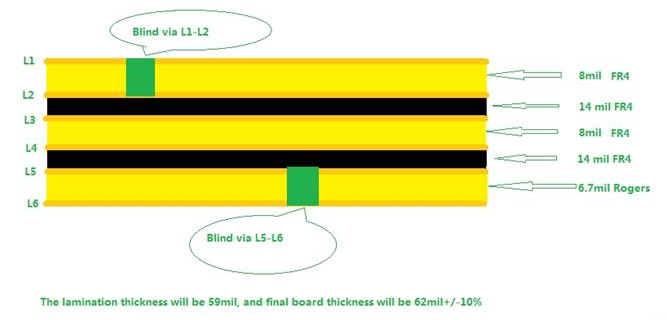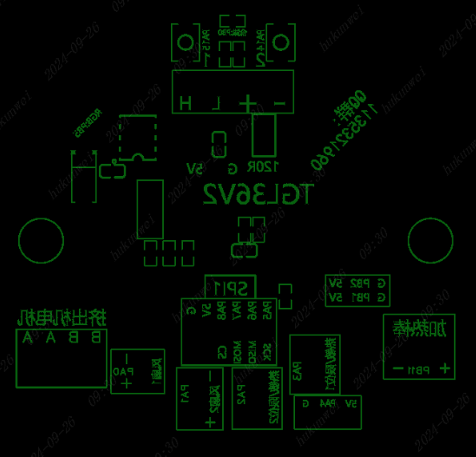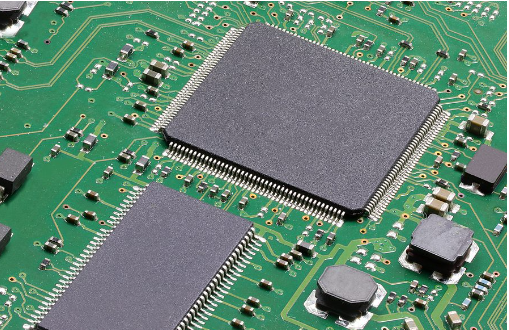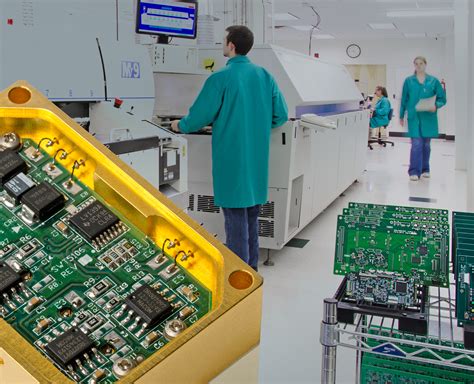Pcb prototype assembly europe
Innovations In PCB Prototype Assembly Across Europe
In recent years, the landscape of PCB prototype assembly in Europe has undergone significant transformations, driven by technological advancements and a growing demand for more efficient and reliable electronic components. As the backbone of modern electronics, printed circuit boards (PCBs) are crucial in the development of a wide array of devices, from consumer electronics to industrial machinery. Consequently, the need for innovative approaches in PCB prototype assembly has become more pronounced, prompting European companies to invest in cutting-edge technologies and methodologies.
One of the most notable innovations in PCB prototype assembly across Europe is the adoption of advanced manufacturing techniques such as surface mount technology (SMT) and through-hole technology (THT).
These methods have revolutionized the way components are mounted onto PCBs, allowing for greater precision and efficiency. SMT, in particular, has gained widespread popularity due to its ability to accommodate smaller components and higher circuit densities, which are essential for the miniaturization of electronic devices. By leveraging these technologies, European manufacturers are able to produce high-quality prototypes that meet the stringent demands of modern electronics.
In addition to manufacturing techniques, the integration of automation and robotics in PCB prototype assembly has also played a pivotal role in enhancing productivity and accuracy.
Automated assembly lines equipped with robotic arms and sophisticated software systems have enabled European companies to streamline their production processes, reducing the likelihood of human error and ensuring consistent quality. This shift towards automation not only accelerates the prototyping phase but also allows for rapid iterations, which is crucial in the fast-paced world of electronics development.
Moreover, the rise of digitalization and Industry 4.0 has further propelled innovations in PCB prototype assembly.
The implementation of digital twin technology, for instance, allows manufacturers to create virtual replicas of physical prototypes, enabling them to simulate and analyze various scenarios before actual production. This approach not only minimizes the risk of design flaws but also optimizes the overall assembly process, leading to cost savings and improved time-to-market. European companies are increasingly embracing these digital tools to stay competitive in the global market.
Sustainability is another key area where European PCB prototype assembly is making strides.
With growing environmental concerns, manufacturers are seeking eco-friendly materials and processes to reduce their carbon footprint. The use of lead-free soldering techniques and recyclable materials is becoming more prevalent, aligning with the European Union’s stringent environmental regulations. By prioritizing sustainability, European companies are not only contributing to a greener future but also appealing to environmentally conscious consumers.
Furthermore, collaboration and knowledge sharing among European countries have fostered a culture of innovation in PCB prototype assembly.
Initiatives such as cross-border research projects and industry partnerships have facilitated the exchange of ideas and best practices, driving continuous improvement in the field. This collaborative approach has enabled European manufacturers to leverage diverse expertise and resources, ultimately enhancing their competitive edge on the global stage.
In conclusion, the landscape of PCB prototype assembly in Europe is characterized by a dynamic interplay of technological advancements, automation, digitalization, sustainability, and collaboration. As the demand for sophisticated electronic devices continues to grow, European companies are well-positioned to lead the charge in delivering innovative and high-quality PCB prototypes. By embracing these innovations, they are not only meeting the evolving needs of the market but also setting new standards for excellence in the electronics industry.

Top European Companies Leading PCB Prototype Assembly
In the rapidly evolving landscape of electronics manufacturing, Europe has emerged as a significant hub for PCB prototype assembly, with several companies leading the charge in innovation and quality. These companies are not only setting benchmarks in the industry but are also driving technological advancements that cater to a wide array of sectors, including automotive, telecommunications, and consumer electronics. As the demand for more sophisticated and miniaturized electronic devices grows, the role of PCB prototype assembly becomes increasingly crucial, and European companies are at the forefront of meeting these challenges.
One of the key players in this domain is Eurocircuits, a company renowned for its commitment to delivering high-quality PCB prototypes with quick turnaround times.
Eurocircuits has established itself as a leader by focusing on customer-centric solutions and leveraging advanced manufacturing technologies. Their online platform allows for seamless interaction with clients, enabling them to upload designs, receive instant quotes, and track the progress of their orders. This level of transparency and efficiency has positioned Eurocircuits as a preferred partner for many businesses seeking reliable PCB prototype assembly services.
Transitioning to another notable company, Würth Elektronik stands out for its extensive range of PCB solutions and its emphasis on research and development.
Würth Elektronik invests heavily in innovation, ensuring that they remain at the cutting edge of technology. Their expertise in producing multilayer PCBs and their ability to handle complex designs make them a go-to choice for industries that require precision and reliability. Furthermore, their commitment to sustainability and environmentally friendly practices aligns with the growing demand for green manufacturing processes in Europe.
In addition to these companies, NCAB Group has made significant strides in the PCB prototype assembly sector.
With a global presence and a strong foothold in Europe, NCAB Group offers a comprehensive suite of services that cater to various customer needs. Their focus on quality assurance and rigorous testing protocols ensures that every prototype meets the highest standards. By maintaining close relationships with their suppliers and continuously optimizing their supply chain, NCAB Group is able to deliver cost-effective solutions without compromising on quality.
Moreover, Asteelflash, a part of the USI Group, is another prominent name in the European PCB prototype assembly market.
known for their expertise in electronic manufacturing services, Asteelflash provides end-to-end solutions that encompass design, prototyping, and mass production. Their ability to adapt to the dynamic needs of the market and their focus on innovation have earned them a reputation as a reliable partner for companies looking to bring their electronic products to life.
As we consider the broader implications of these companies’ contributions, it becomes evident that the European PCB prototype assembly industry is characterized by a strong emphasis on quality, innovation, and customer satisfaction. The collaborative efforts of these leading companies not only enhance the competitiveness of the European market but also contribute to the global advancement of electronic technologies. By continuously pushing the boundaries of what is possible in PCB design and assembly, these companies are paving the way for the next generation of electronic devices.
In conclusion, the top European companies in PCB prototype assembly are distinguished by their commitment to excellence and their ability to adapt to the ever-changing demands of the industry. Through their innovative approaches and dedication to quality, they are not only meeting the needs of today but are also shaping the future of electronics manufacturing. As the industry continues to evolve, these companies will undoubtedly remain at the forefront, driving progress and setting new standards for PCB prototype assembly worldwide.
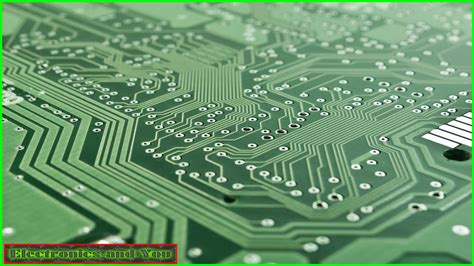
Challenges And Solutions In European PCB Prototype Assembly
The landscape of PCB prototype assembly in Europe presents a unique set of challenges and opportunities that are distinct from other regions. As the demand for advanced electronics continues to grow, European manufacturers are under pressure to deliver high-quality prototypes swiftly and efficiently.
One of the primary challenges faced by these manufacturers is the complexity of the supply chain.
With a diverse range of suppliers spread across different countries, ensuring timely delivery of components can be a daunting task. This complexity is further exacerbated by the stringent regulations and standards that European companies must adhere to, which often require additional documentation and compliance checks.
Moreover, the rapid pace of technological advancement means that European PCB manufacturers must constantly innovate to stay competitive.
This requires significant investment in research and development, as well as in state-of-the-art equipment and skilled personnel. However, the high cost of labor and materials in Europe can make it difficult for companies to maintain profitability while also investing in these areas. To address these challenges, many European manufacturers are turning to automation and digitalization. By automating certain aspects of the assembly process, companies can reduce labor costs and increase efficiency. Digitalization, on the other hand, allows for better tracking and management of the supply chain, ensuring that components are delivered on time and that any issues are quickly identified and resolved.
Another significant challenge in the European PCB prototype assembly sector is the need for customization.
As products become more complex and specialized, customers are increasingly demanding tailored solutions that meet their specific needs. This requires manufacturers to be flexible and adaptable, often necessitating changes to production processes and the use of specialized materials. To meet these demands, many companies are adopting agile manufacturing techniques, which allow for greater flexibility and faster response times. By implementing these techniques, manufacturers can more easily accommodate changes in customer requirements and deliver customized solutions without compromising on quality or efficiency.
In addition to these operational challenges, European PCB manufacturers must also navigate a competitive market landscape.
With numerous players vying for market share, companies must differentiate themselves through innovation, quality, and customer service. This often involves developing new technologies and processes that set them apart from competitors. Collaboration and partnerships are also becoming increasingly important, as companies seek to leverage each other’s strengths and capabilities to deliver superior products and services.
Despite these challenges, the European PCB prototype assembly industry is well-positioned for growth.
The region’s strong emphasis on quality and innovation, combined with its skilled workforce and advanced infrastructure, provides a solid foundation for success. Furthermore, the increasing demand for electronics in sectors such as automotive, healthcare, and telecommunications presents significant opportunities for expansion. By addressing the challenges outlined above and capitalizing on these opportunities, European PCB manufacturers can continue to thrive in an increasingly competitive global market.
In conclusion, while the European PCB prototype assembly industry faces a number of challenges, there are also numerous solutions and strategies that companies can employ to overcome them. By embracing automation, digitalization, and agile manufacturing techniques, manufacturers can improve efficiency and meet the growing demand for customized solutions. Additionally, by fostering innovation and collaboration, companies can differentiate themselves in a crowded market and position themselves for long-term success. As the industry continues to evolve, those who are able to adapt and innovate will be best placed to capitalize on the opportunities that lie ahead.
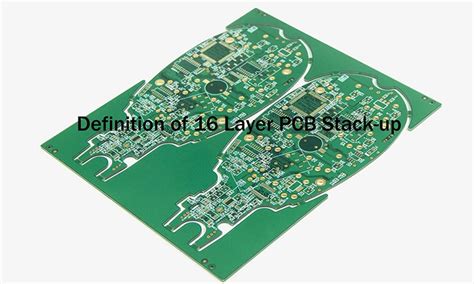
The Future Of PCB Prototype Assembly In Europe
The future of PCB prototype assembly in Europe is poised for significant transformation, driven by technological advancements, evolving market demands, and strategic policy initiatives. As the backbone of modern electronics, printed circuit boards (PCBs) are integral to the functionality of a wide array of devices, from consumer electronics to sophisticated industrial machinery. In Europe, the PCB prototype assembly sector is experiencing a dynamic shift, influenced by several key factors that promise to redefine its landscape.
To begin with, the rapid pace of technological innovation is a primary catalyst for change in the PCB prototype assembly industry.
The advent of technologies such as the Internet of Things (IoT), 5G connectivity, and artificial intelligence (AI) is necessitating the development of more complex and efficient PCBs. These technologies demand higher performance, miniaturization, and enhanced reliability, pushing manufacturers to adopt cutting-edge assembly techniques and materials. Consequently, European companies are investing heavily in research and development to stay at the forefront of these technological trends, ensuring that they can meet the sophisticated requirements of modern electronic devices.
Moreover, the shift towards sustainability and environmental responsibility is another significant factor shaping the future of PCB prototype assembly in Europe.
With increasing awareness of the environmental impact of electronic waste, there is a growing emphasis on developing eco-friendly manufacturing processes. European manufacturers are exploring the use of biodegradable materials and energy-efficient production methods to minimize their carbon footprint. This shift not only aligns with the European Union’s stringent environmental regulations but also caters to the rising consumer demand for sustainable products. As a result, companies that prioritize sustainability are likely to gain a competitive edge in the market.
In addition to technological and environmental considerations, the economic landscape in Europe is also influencing the PCB prototype assembly industry.
The region’s strong emphasis on innovation and quality has positioned it as a leader in high-value manufacturing. However, the global competition, particularly from Asia, poses challenges that European manufacturers must navigate. To maintain their competitive advantage, European companies are focusing on enhancing their operational efficiency and reducing production costs. This involves adopting automation and digitalization in their assembly processes, which not only improves precision and speed but also reduces human error and labor costs.
Furthermore, the European Union’s strategic policy initiatives are playing a crucial role in shaping the future of the PCB prototype assembly sector.
The EU’s commitment to fostering a robust electronics industry is evident in its support for initiatives that promote innovation, research, and collaboration among member states. By providing funding and resources for technological development, the EU is enabling companies to explore new frontiers in PCB assembly. Additionally, policies aimed at strengthening supply chain resilience and reducing dependency on non-European suppliers are encouraging local production and innovation.
In conclusion, the future of PCB prototype assembly in Europe is characterized by a confluence of technological, environmental, economic, and policy-driven factors. As the industry adapts to these changes, European manufacturers are well-positioned to lead the way in developing advanced, sustainable, and efficient PCB solutions. By embracing innovation and sustainability, and leveraging strategic policy support, the European PCB prototype assembly sector is set to thrive in the coming years, meeting the demands of an increasingly complex and interconnected world.


